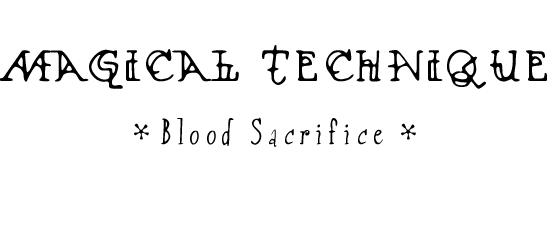 |
 The search for hidden resources of power has lead humanity towards the development of magical arts in nearly every society where such searches have arisen. The sorcerers of a culture drive their minds deep into the fabric of the universe seeking greater control over their world. When the unpredictability of magic requires that the methods and theories of the art becomes standardized, religion develops. A vision of reality to which one can relate on a personal level will much more easily gain acceptance than a vision of a world of nameless and incomprehensible forces. Fearing the responsibilities of power, religion allows desires to manifest through the "will" of a deity which acts as a filtration system. One prays to the deity, and the deity grants the desired favor if it does not interfere with the moral identity of the deity. By establishing deities representing the social functions of humans, a society limits the sort of magic done to that which the sanctioned deities will perform through their priests and devotees. This prevents blatantly disruptive sorcery and keeps things running in a relatively orderly manner. The disadvantage of the system lies in that it creates distance between the magician and the magical act. As if the mind and its universe did not filter out enough of magic already, the theurgist volunteers for another censor (the deity) to monitor magical work. The loss of a direct contact with magical powers has inspired theurgists to search for alternatives through which deities can be moved to perform magic. A general theory among theurgists holds that the gods created living things and endowed them with a force of spirit or soul which inhabits them, and that this soul has power, as it connects the creature to its creator. By releasing the soul of the creature, one releases its potential power - so the theory goes. Possibly after making note that the body dies when the blood leaves it, the ancient people of the world considered the spirit to leave with the blood, shedding its energy as the soul departs from the world of the living. After pacifying the deity who empowered the creature, the ancient theurgists would perform a ceremony to please the deity, during which they would slaughter the animal and release its energy for magical purposes. Often these rites were public rituals designed to release a burden from the population or to ensure success in their common goals. Sometimes, especially so in recent times, the slaughter serves a more personal or private end. In either case, as the prevalence of religion marks the degeneration of magic, so does the slaughter of animals in the name of sorcery represent the degeneration of behavioral standards and a mark of inefficiency. I present the following not as an encouragement towards ritual slaughter, but as an explanation of the methods, uses, and cultural context of the acts.
Livestockare by far the most common sacrificial victims, and the reasons for their slaughter varies greatly. Generally this sort of sacrifice happens as a public act and receives the esteem of the community which it serves to bind.
Domestic Animals
Exotic Animalsappear almost exclusively in connection with specific procedures in sacrificial rituals. In this sense, the rites have a closer tie to sorcery than to theurgy, but the influence of religious rituals remains.
Humansare considered a taboo for sacrifices, as most societies have considered this an act of antisocial behavior, except in the case of defeating an enemy. Shrunken heads are made by taking a fresh human head and removing the skull, then boiling the skin and hair. The head is left to dry in the sun after this, and thereafter one fills the face with wax (to the desired facial shape) after sewing the eyes and lips shut. Sand fills the remainder of the head, and it can be stitched together along the scalp and neck. Diabolists of ages past were accused of making ointments from human fat, to which they added deadly herbs such as nightshade and aconite. Likewise it is suspected that these same people made candles from boiled human fat, mixed with beeswax. Today the diabolists may have more elaborate schemes in mind. Adrenaline-based compounds may be extracted from the adrenal glands with a small sponge, if one can keep the victim alive (and conscious) long enough for them to be terrified into releasing overdoses of adrenaline. A local anesthetic is most useful here. A simple bout with PCP might prove easier to obtain and more interesting, if one is inclined to such things. Also, one may extract dimethyltryptamine (DMT) from the human pineal gland, but a simple alkaline salt extraction will yield this chemical from canary grass with much less risk and much more efficiency.
Fish?


|
 |
 |


